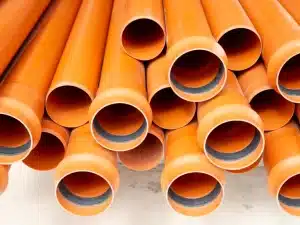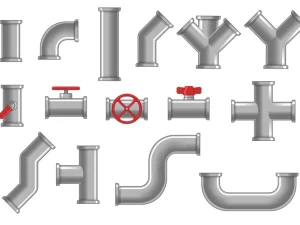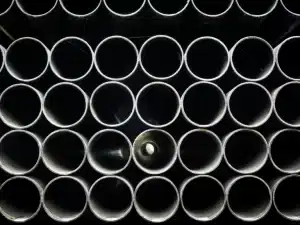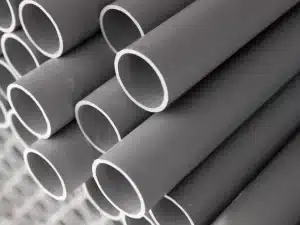Flanges vs. Welded Joints: Which One is Better for Your Project?
Choosing the right pipe connection method is crucial for industrial fluid and gas transportation applications. The two most commonly used options are flanges and welded joints, each offering distinct advantages. The choice depends on key factors such as cost, performance, maintenance, and durability. Flanges for the oil and gas industry are widely preferred due to their ease of disassembly, making repairs and modifications more efficient.
On the other hand, welded joints provide a stronger, more permanent bond, ensuring long-term reliability in high-pressure environments. Whether you work in construction, manufacturing, or the oil and gas sector, understanding the advantages and disadvantages of each method will help you choose the best option for your specific needs.
Understanding Flanges: Features and Applications
Flanges are widely used in industries requiring flexible pipelines, valves, and equipment connections. These mechanical connectors facilitate easy assembly and disassembly, making maintenance and inspections more convenient.
Key Features of Flanges:
Manufactured from high-quality carbon steel, stainless steel, and alloy steel.
Allow for quick disassembly and replacement of pipeline sections.
Gaskets and bolts are required to create a secure, leak-proof connection.
Common Applications:
Widely used in the oil and gas industry, flanges ensure strong and leak-proof connections in refineries and gas processing facilities.
Chemical plants and water treatment facilities require frequent inspections.
Power plants where maintenance accessibility is essential.
Many flanges suppliers provide different types, including slip-on, blind, weld neck, and socket weld flanges, ensuring compatibility with various project requirements.
Welded Joints: Characteristics and Benefits
Welded joints permanently join pipes by fusing metal surfaces using TIG, MIG, and arc welding techniques.
Advantages of Welded Joints:
Provide a strong, seamless connection, reducing the risk of leaks.
Withstand extreme pressure and temperature conditions.
Eliminate the need for additional components like gaskets and bolts, reducing material costs.
Industries That Prefer Welded Joints:
High-pressure steam and gas pipelines.
Subsea pipelines where leak prevention is critical.
Structural and industrial piping systems require permanent installations.
Although flanges allow for flexibility, welded joints offer superior long-term durability and structural integrity, making them ideal for high-performance applications.
Key Differences Between Flanges and Welded Joints
Flanges and welded joints are integral components of piping systems, differing in function, advantages, and limitations. Here are the key differences between them:
Specification
Flanges: Mechanical connections that join two pipes, valves, or equipment, using bolted rings and gaskets to seal.
Welded Joints: A permanent connection formed by fusing two metal pieces using heat, often reinforced with filler material.
Strength & Durability
Flanges: Provide a strong connection but are more prone to leaks over time due to gasket wear and bolt loosening.
Welded Joints: Offer higher strength and durability as they create a seamless, leak-proof connection.
Leakage Potential
Flanges: More susceptible to leaks, especially under high pressure or vibration.
Welded Joints: Less prone to leakage since they form a continuous metal connection.
Installation & Maintenance
Flanges: Easier to install, disassemble, and replace, making them suitable for systems requiring frequent maintenance.
Welded Joints: Require skilled labor and specialized equipment for installation; maintenance is difficult as cutting and re-welding are needed for modifications.
Flexibility & Customization
Flanges: Allow for easy pipeline modifications, expansions, or dismantling.
Welded Joints: Offer less flexibility; any modification requires cutting and re-welding.
Cost Consideration
Flanges: Higher initial cost due to the need for gaskets and bolts but lower labor costs for installation.
Welded Joints: Lower material costs but higher labor costs due to skilled welding requirements.
Application Suitability
Flanges: Used in systems requiring frequent inspection, cleaning, or modifications, such as in the chemical and oil industries.
Welded Joints: Preferred in high-pressure and high-temperature applications, such as power plants and aerospace industries.
Factors to Consider When Choosing Between Flanges and Welded Joints
Selecting the most suitable connection method depends on various factors, including maintenance needs, cost implications, and operational requirements.
Project Requirements
If the system requires periodic maintenance, flanges provide flexibility for disassembly and replacements. Welded joints are the preferred choice for permanent, high-strength installations.
Cost Considerations
Flanges have higher upfront material costs due to gaskets and bolts, whereas welded joints require skilled labor and specialized equipment, impacting overall project expenses.
Maintenance and Repairs
Flanges simplify repairs by allowing components to be replaced without cutting or modifying the pipeline, reducing downtime and maintenance costs.
Operating Conditions
Welded joints are ideal for high-pressure and high-temperature environments, as their seamless construction enhances durability, strength, and leak resistance.
Downtime and Installation
Flanges offer quicker installation with minimal disruption, while welding requires more time, technical expertise, and safety precautions during assembly.
Cost Comparison: Flanges vs. Welded Joints
Cost is crucial in determining the most suitable connection method, balancing initial investment with long-term maintenance expenses.
Flanges
Incur higher upfront material costs due to the need for gaskets, bolts, and sealing components but have lower labor expenses for installation. They are also more cost-effective in the long run for maintenance and repairs, as they allow for quick disassembly and part replacements.
Welded Joints
Feature lower material costs since they do not require additional sealing components. However, they demand higher labor expenses due to the need for skilled welding professionals and specialized equipment.
Long-Term Costs
While welded joints provide a more durable, long-lasting solution, repairs and modifications can be labor-intensive and costly. In contrast, flanges offer cost savings by enabling faster, more convenient part replacements and system modifications with minimal downtime.
Performance and Durability Considerations
Flanges
More vulnerable to gasket wear and potential leaks over time but provide excellent flexibility for modifications, maintenance, and future expansions, making them ideal for systems requiring frequent adjustments or upgrades.
Welded Joints
Offer exceptional durability and long-term reliability, even in extreme conditions. However, repairing structural defects is complex and requires significant downtime, skilled labor, and specialized equipment to ensure proper restoration and safety.
Maintenance and Repair Requirements
Flanges
Facilitate quick disassembly and easy pipeline section replacement, reducing operational downtime while streamlining routine maintenance, emergency repairs, or system expansions, making them highly suitable for dynamic industrial environments.
Welded Joints
More difficult to repair due to the need for precise cutting, grinding, and re-welding, which increases labor costs, repair time, technical expertise, and the overall complexity of maintaining a secure and efficient pipeline system.
Common Applications for Each Type of Connection
Flanges are commonly used in:
Oil & Gas Pipelines: Flanges in the oil and gas industry require regular maintenance, inspections, and component replacements for safety and efficiency.
Water Treatment & Chemical Processing: Provide system flexibility and easy disassembly for maintenance and upgrades.
Industrial Machinery Connections: Facilitate frequent part replacements, servicing, and modifications in industrial equipment.
Welded joints are commonly used in:
High-Pressure Pipelines: Essential for leak-proof, seamless connections that ensure safety and efficiency.
Structural Applications: Used in bridges, pressure vessels, and heavy-duty frameworks requiring strong, permanent bonds.
Subsea Oil & Gas Pipelines: Designed for extreme underwater conditions, offering superior durability, corrosion resistance, and long-term reliability.
Conclusion
Flanges and welded joints serve distinct roles based on project requirements. Flanges for the oil and gas industry offer flexibility and easy maintenance, making them ideal for applications requiring frequent modifications. In contrast, welded joints provide superior strength and leak prevention, making them the preferred choice for high-pressure, high-temperature environments. The two decisions depend on cost, maintenance needs, and operational demands. Consulting reliable flanges suppliers can help industries select the best project components.
FAQs
What is the main difference between flanges and welded joints?
Flanges connect pipes using bolts and gaskets, allowing for easy disassembly and repairs. Welded joints permanently fuse pipes, offering a stronger, leak-free connection but requiring more effort to modify or repair.
Which option provides better leak prevention: flanges or welded joints?
Welded joints provide superior leak prevention, creating a seamless, gap-free connection. In contrast, flanges rely on gaskets that can degrade over time, increasing leakage risks. Choosing reliable flanges suppliers ensures better gasket quality and long-term performance.
Are flanges or welded joints more cost-effective in the long run?
Flanges are more cost-effective for frequent maintenance projects since they allow quick repairs. Welded joints, while more durable, can be expensive to modify or repair, making them less economical for systems requiring future adjustments.







